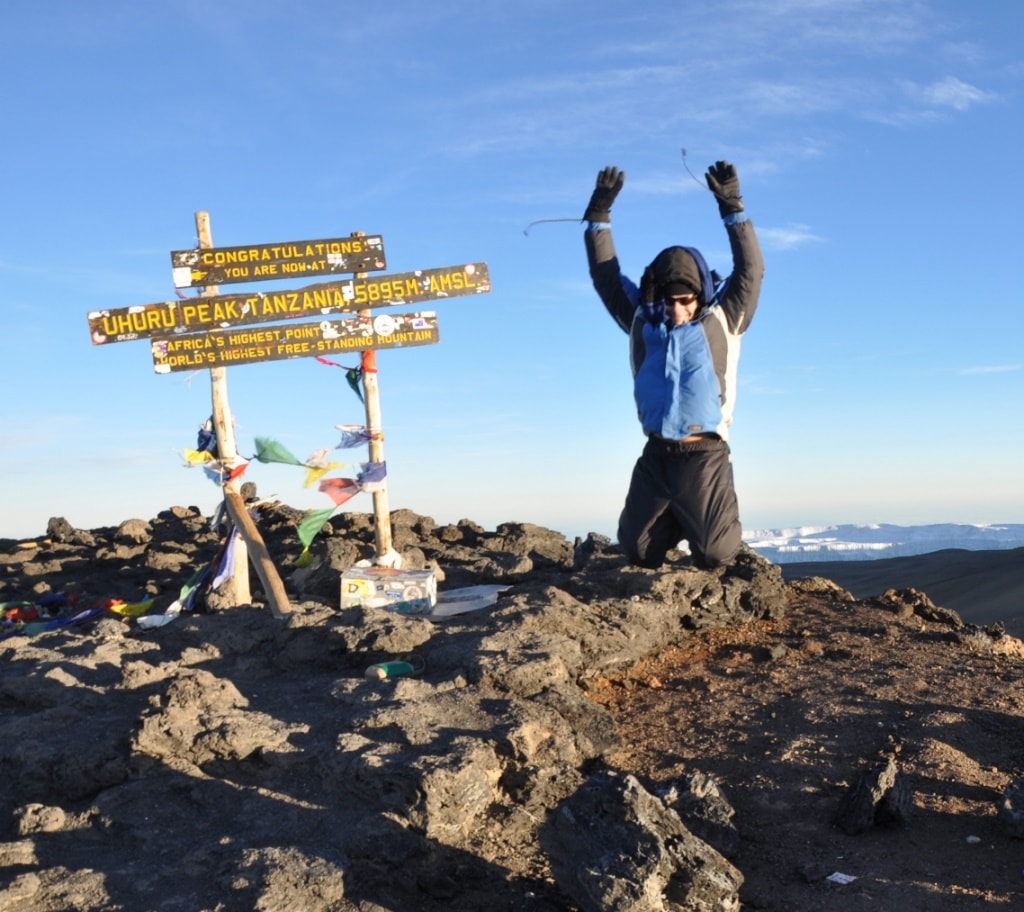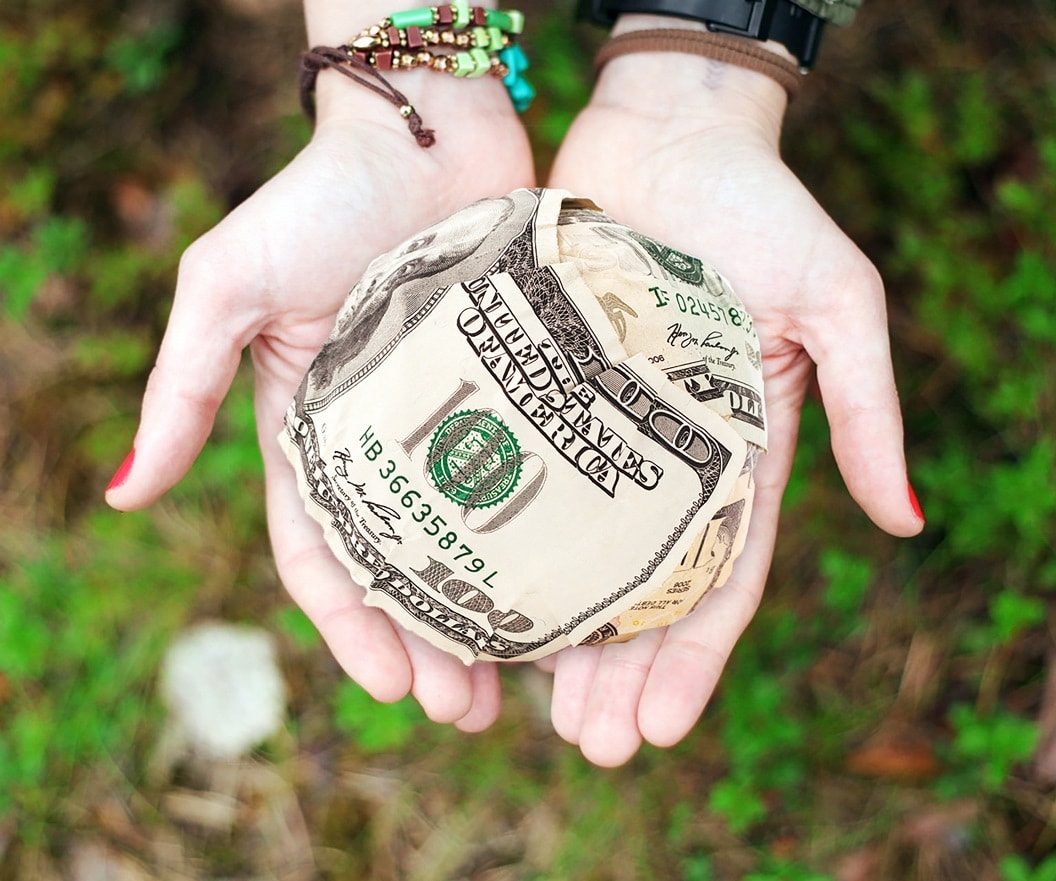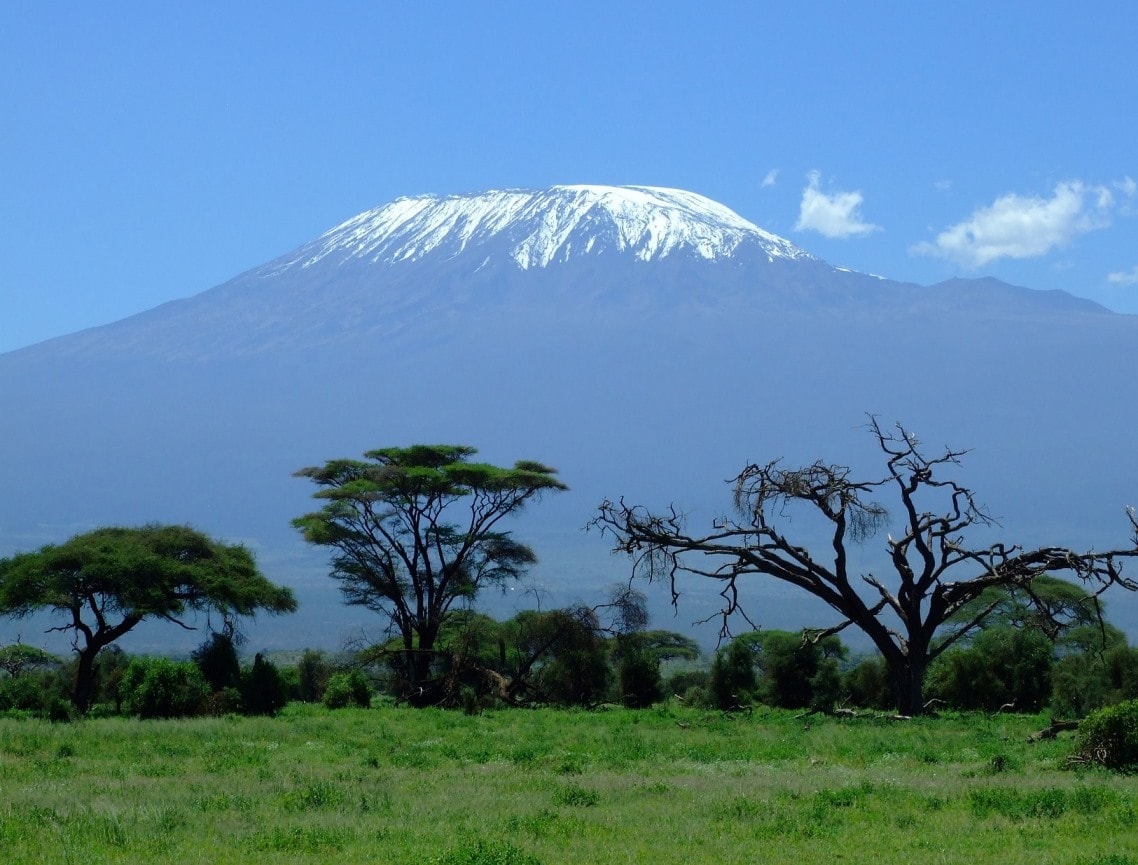Many of us are looking to make a difference in the world, and what better way of doing this than by climbing the Kilimanjaro for charity? Sounds crazy, right? Well, when you think about it, not really!
First off, you do not need to be a celebrity to raise money for charity! You just need to be passionate and believe that you can make a difference and be willing to put all the efforts necessary to reach your goals.
Secondly, you do not have to be a professional athlete to climb Kilimanjaro. Even though Mount Kilimanjaro is the highest mountain on the African continent, reaching a height of 19,341 ft (5,895 m), the climb is not a technical climb.
However, you should enroll in a training program 6 to 12 months before the departure date of your expedition to get ready for the climb.
Finally, why not kill two birds with one stone as the adage says? If you are planning on climbing Mount Kilimanjaro for your next vacation, because you are looking for adventure, to test your limits as well as earn some bragging rights for your achievement, why not add to the mix for charity?
Now that you are ready to journey to Mount Kilimanjaro, I ought to give you a few pointers on how to go about finding a charity, along with some tips for fundraising, and on how to find a tour operator to make sure that you reach the summit!

So, without any further ado,
Choose Your Charity
The best advice I can give you on how to choose a charity is to pick one that you are passionate about, and that is close to your heart. For instance, if someone in your family or your inner circle of friends has suffered from cancer, thus, the cancer association might be a good choice for you.
By being personally invested in the cause, you will be far more effective in raising money because you will be talking about your personal experiences. Remember, the more you know about the charity, the better!
However, if you have no idea of which charity to pick for your climb of Kilimanjaro, do some research! There are more than one million charities within the USA alone and even more worldwide! So, you should be able to find something.
You can choose a local or an international charity organization; it does not matter, as long as you are willing to get involved and raise money for them. Don’t forget to ask the charity organization that you have chosen their permission to collect funds on their behalf!
Before you get involved, do your homework! Find out everything you can about the selected charity, such as its values, its administrative and operating costs, as well as what are the intended purposes of the money raised by the charity.
Don’t be afraid to ask questions, if you have a hard time getting answers or don’t like what you hear, then move on and choose another charity!
Choose Your Tour Operator
Depending on your personal preferences, you can pick a charity that offers climbs to the Kilimanjaro, or you can opt for the do-it-yourself approach.
1. Nasio Trust
The Nasio Trust is a charity organization that organizes climbs of Mount Kilimanjaro to finance their charity work in Kenya. Choosing the Nasio Trust enables you to focus on fundraising and getting fit for the climb.
The Nasio Trust is a charity registered in the UK and founded by Jonathan and Nancy Hunt to help the HIV orphans of Kenya. All the money raised through the Kilimanjaro climb is used for the different projects set up to help these children.
The group size for the climb ranges from 6 to 12 persons. You can go solo and join an existing group of climbers or bring your friends or work colleagues and form a group as long as you are at least 6, and no more than 12 people.
You can choose between the two following climbing routes:
- Lemosho Route
- Machame Route
The best way to learn more about climbing the Kilimanjaro with Nasio trust is simply to watch the video below:
2. Do-It-Yourself Approach
Going with a DIY approach enables you to oversee every detail, including the choice of the charity, fundraising, and finding a tour operator that specializes in Kilimanjaro expeditions. This option allows you to custom-make every aspect of the project according to your personal preferences, but one drawback, it involves much work!
There are many tour operators out there that offer packages for climbing Mount Kilimanjaro, and their prices range from cheap to expensive. Moreover, the selection of a tour operator should not be based on the price!
I have listed below six critical factors that are far more important to consider than the price when choosing a tour operator:
- Safety records: Make sure that the tour operator has an excellent safety record as well as expertise in preventing and treating altitude sickness and injuries.
- Equipment: The equipment has to withstand extreme weather conditions. Therefore, choose an outfitter that uses high-quality equipment for the climb.
- Porters welfare: Your livelihood depends on it since the porters are hauling your supplies up the mountain! Make sure that they are well taken care of by the tour operator.
- Food and water: You need energy and plenty of water for acclimatization. So, make sure the tour operator offers nutritious food and plenty of water!
- Environment-friendly: There are thousands of climbers each year trekking on Mount Kilimanjaro. You should look for a tour operator that follows the ”leave no trace” standards, to ensure a litter-free environment for future generations of climbers.
- Customer Service: is of the utmost importance, you have questions and want answers. Choose a tour operator that answers all your questions to your satisfaction.
Keep in mind that you do not have to select a high-end tour operator to reach the top of Kilimanjaro! Many mid-range companies meet all six criteria and constitute an excellent alternative for your expedition.
How Much Money Do You Need for Your Expedition?
Now, you need to figure out how much it is going to cost you to climb Mount Kilimanjaro. You need to take into account the following: the airfare cost, travel insurance, transportation, vaccinations, visas, gear, gratuities for the staff, and the food. So, depending on your choice of tour operator, your expenditures might be around 4,000-5,000 USD.
Next, in my opinion, you have two options when it comes to paying for your trip:
1) Collect extra money through your fundraising to cover the cost of your expedition.
2) Pay all expenditures with your money. Consider this as being part of your personal contribution to your charity!
Personally, I would not cover the cost of the climb with money intended for charity. Why? Because it might be interpreted by some as a way to get a paid vacation under the pretext of raising money for charity!
How to Raise Money for Your Charity?
There are many ways that you can raise money for your charity. I have outlined a few ways to collect funds; you just need to think outside the box and be creative about it!
First off, set up a website and Facebook page to collect donations and use these platforms to get the word out about your project of climbing Mount Kilimanjaro for charity!
Personal Donations
First, you should start by asking everyone that you know to sponsor you for your expedition. Ask your family, friends, acquaintances, and work colleagues. Don’t be shy!
Fundraisers
Organize different events for fundraising such as barbecues, sporting events, bingo nights, and so on. Be imaginative!

Corporate Sponsorship
You could ask the local businesses for support, and in exchange, offer to promote their products.
Also, knock on the door of big corporations, and ask them to sponsor you. Let them know about your willingness to promote their products via social media. Post daily photos and videos of your adventure on your Facebook page. This way, you get money for your charity, and the company gets free publicity for their brands!
Media
Advertise your project and all your fundraising events within your local community, by giving interviews to your local newspapers, local radio stations, and so on.
Finally, your fundraising strategy should be based on goals that relate to your climb of Mount Kilimanjaro. Let me give you an example. Since the mountain is 19,341 ft high (5,895 m), ask people to sponsor you for 2$ for each foot or meter that you climb on the mountain.
Prepare Your Climb
Keep in mind, that even though Mount Kilimanjaro is not a technical climb, you need to be physically fit to trek the Kilimanjaro and also be aware of the risks of altitude sickness.
Once you have booked your trip to Mount Kilimanjaro, don’t procrastinate, you must get fit and start fundraising!
You should plan your expedition for the months of July to October or December to February (dry season).
Select your climbing route wisely. Don’t forget that you are doing this for a charity, and it is important that you reach the summit!
Therefore, you should choose a climbing route that allows you to reach the top in 7-9 days, giving you ample time for acclimatization, thereby increasing your chances of success.
Conclusion
Now, you are ready to undertake an unforgettable adventure of a lifetime! Keep in mind that you need to plan ahead, to make sure that your Kilimanjaro adventure for charity goes without a hitch!
Pick a charity with whom you have a personal connection or firmly believe, it will be easier for you to connect with people and, therefore, collect funds.
Since we are regularly solicited for money, don’t be afraid to innovate with your fundraising campaign, take full advantage of the social media!
Be resourceful, and focus your fundraising campaign around Mount Kilimanjaro.

If you are interested in reaching Africa’s roof, click here to learn more about the climbing routes on Mount Kilimanjaro.
If you have any inquiries about climbing Mount Kilimanjaro for charity, or would like to share your fundraising experiences for various charities, please leave a comment below. I would love to hear from you.
I enjoyed your post here as I am in the early stages of looking into some future vacation type journeys. I had never thought of combining a personal vacation with raising money for charity, however! What an inspirational idea.
I was also glad to see the importance of the “Leave no Trace” under your recommendations. That is a very significant item that I sure most people would not think of on the front end of things.
I guess my only real question is how fit do you need to be?
I am also glad that there are organizations such as ”Leave no trace” to help protect the environment.
Yes, you need to be fit to climb the Kilimanjaro, and you should enroll in a training program at least six months before your expedition. With the help of a trainer, build a training program to get fit for the climb. However, it does not guarantee that you will successfully reach the top! Another factor besides being fit you need to take into account is acclimatization.
As you climb to high altitude, the oxygen level in the atmosphere decreases. So, your body adapts by producing more red blood cells (oxygen carriers) and increasing your blood volume, but it takes time.
Therefore, if you are thinking of climbing the Kilimanjaro, you should consider what is called an altitude training system that simulates high altitude conditions and help slowly increase your red blood cells leading to an increase in your blood oxygen level.
You have two options to help you achieve this. Either by sleeping in a tent that contains the same amount of oxygen found at 10,500 feet or by doing a light workout while wearing a mask that simulates the level of oxygen found at high altitudes. You should start your altitude training at least a couple of months before your departure.
Finally, getting pre-acclimatized will reduce the risk of altitude sickness and increase your chances of success!
Hope it helps.
Hi Sonia,
WOW! If you have climbed Mount Kilimanjaro for charity, congratulations you are amazing.
I think the advice about how to choose a charity was relevant and well said. Many years ago I did some running for charity, and I agree with picking a charity that you are passionate about helps motivate you. Since raising funds could be challenging at times!
Well done!
Erin
Well, no I have not climbed Mount Kilimanjaro yet! However, I am thinking about it!
Thanks for stopping by 😉
Climbing Kilimanjaro sounds like a delightful holiday but doing it for charity sounds even better. To make a difference and enjoy the doing of it, must be a satisfying and rewarding adventure, and something I think I would fancy.
I am wondering how fit you would have to be, and if there is some age limit? Although I consider myself reasonably healthy and agile for my age, I would worry that my fitness level would not be good enough.
I can imagine only the fit and young would consider this kind of experience.
Ches
About the age limit, the minimum age to climb Kilimanjaro is ten years old. There is no maximum age. As a matter of fact, the eldest person to climb Mount Kilimanjaro was 85 years old! However, if you are over 60, you talk to your doctor to find out if you should embark on that journey!
If you are thinking of climbing Mount Kilimanjaro, no matter what age you are, you should get a medical checkup.